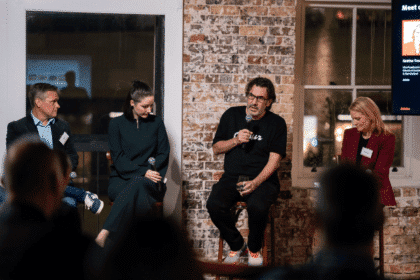In this opinion piece, Jon Stubley, VP ANZ sales for GumGum tracks the revenue rise of Google and predicts how advertising and technology will combine to create big dollar markets in the future.
Google was in the news a week or so ago for what proved to be a fairly unpopular test of new search term colours. It should come as no surprise that the company is constantly tinkering with minor details like this.
After all, a few years ago it tested 41 shades of blue to see which one users preferred; and the slightly more purplish shade was reported to have earned the company an extra $200 million.
When a simple colour tweak can generate this type of additional revenue, it is easy to forget that at the turn of the century, when everyone was partying like it was 1999, Google only provided search functionality as a consumer product. Its first significant step towards monetising the search platform only came in October, 2000, with the introduction of Google AdWords.
Like most killer ideas, it was based on a simple premise. People were already entering words and phrases to the search engine, so why not try and sell keywords? As a result, search engine marketing (SEM) was born and today the market is estimated to be worth around 25 billion dollars.
Fifteen years later, Google’s colour test – and the negative responses to it – is a timely reminder that the web is no longer about just text. It has now gone visual (and mobile). More than two billion images are shared online each day, and the growth of visual-first mobile apps such as Instagram and Snapchat – not to mention Pinterest and the increasingly visual Facebook, Twitter, and WhatsApp – is exponential; with most of it occurring via smartphones and tablets.
As a result, many companies out there both established and emerging (my company included) envisage that the next frontier of search is working out how to monetise all these images. To get there, companies are using the kind of technology that can handle such vast amounts of pictures: a form of artificial intelligence known as computer vision, and, more specifically, image recognition, which enables computers to correctly identify what’s inside images (everything from objects and logos to scenes and faces).
What’s more, these programs learn as they go, getting smarter and more accurate the more images that they process, thanks to a method called machine learning, which is also used to train computers to do everything from translate better to drive cars.
Google is naturally a key player in this space with image recognition already being used in Google Photos, where it automatically organises them pictures by person, place, subject, activity, and other categories that previously were only classifiable by human-submitted tags. But beyond consumer applications, this kind of technology is also being monetised, in some ways similarly to the way that search words have been monetised.
Take Pinterest. When pinners zero in their cursor on a specific object in a picture – say, a pendant lamp – image recognition is used to surface other pictures containing pendant lamps. The technology is also being used to aggregate more granular information about consumer interests with a view to using these in order to deliver targeted one-to-one advertising.
For example, in photos of a specific celebrity, ads for, say, brunette hair-specific products can now appear in pictures of brunette celebrities.
Image recognition technology can also be used in less overt ways to help brands. As image recognition algorithms become smarter, they have the capability to deliver more actionable and nuanced insights. How users share images of products on social media, for example – whether or not there is any identifying text – can inform marketing strategies down the line.
Billions of images are shared on social media each and every day in the same way that billions of search terms and keywords are shared in search engines. So to me, it isn’t a question of if images will be monetised; after all we are already at the beginning of the curve with smart brands experimenting with nascent technologies and solutions.
Instead, like any emerging advertising practice, it is only the details that are yet to be wholly defined. Over the coming years, the market – and critically, the consumer – will dictate what the most popular formats will be and who will be taking the lion’s share of the revenue.
But in five years’ time, I’ll bet the farm that in-image advertising will be as ubiquitous on the average media plan as keywords are today.








